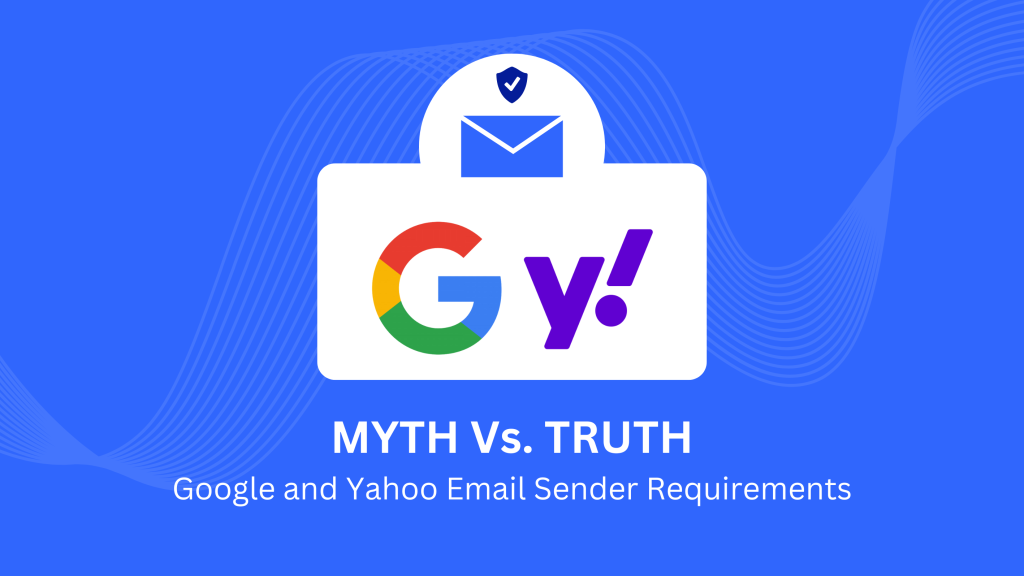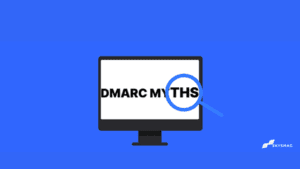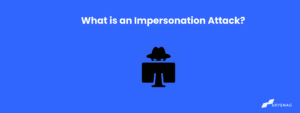15 Myths Debunked: Google & Yahoo Email Sender Requirements

Myth 1: Google and Yahoo’s new guidelines only target large-scale email senders.
The Truth is: While bulk senders may feel the initial impact, these guidelines apply to all senders, including individual businesses and personal email accounts. Compliance is essential for maintaining deliverability, irrespective of sending volume.
Myth 2: Achieving a DMARC policy of p=none ensures complete protection.
The Truth is: While meeting Google’s DMARC policy of p=none is a step forward, it primarily serves as a reporting status and does not provide comprehensive protection against phishing and impersonation attempts. For enhanced email security, transitioning to policies like p=quarantine or p=reject is necessary.

Myth 3: Implementing changes is too complex for small businesses with limited resources.
The Truth is: While navigating these changes independently can be daunting, our expertise and solutions at Skysnag cater to businesses of all sizes and resources. Whether you’re a small enterprise or a large corporation, we provide tailored assistance to achieve DMARC enforcement and ensure continuous compliance.
Myth 4: Stricter authentication protocols will harm legitimate email.
The Truth is: While initial adjustments might lead to short-term fluctuations, the overarching objective is to foster a more secure and trustworthy email environment. This can ultimately benefit legitimate senders by reducing spam competition and enhancing email engagement. If you are implementing DMARC with Skysnag, you’ll have the luxury to avoid this completely.
Myth 5: Compliance with these changes requires only a one-time effort.
The Truth is: Maintaining a reputable sender status is an ongoing endeavor. Businesses must continuously monitor email metrics, adapt sending practices, and adopt new authentication protocols as needed. Continuous effort is vital for sustained quality engagement and minimal spam rates.
Myth 6: We can wait and see before making changes.
The Truth is: Proactive adaptation secures future success. Early adopters gain a competitive advantage in a cleaner inbox environment and evade potential deliverability challenges. Delaying action risks missed opportunities. Implementing changes now fosters user trust, enhances deliverability, and boosts marketing effectiveness.
Myth 7: “These changes don’t affect us as we only send transactional emails.”
The Truth is: Even transactional emails require sender authentication for timely delivery and brand protection. Proper authentication protocols ensure messages reach inboxes, bypass spam filters, and foster recipient trust. These changes aim to create a secure email ecosystem for all senders, including transactional ones.
Myth 8: Permission-based email lists guarantee inbox placement.
The Truth is: Permission alone doesn’t guarantee delivery. Regular list maintenance, engagement tracking, and adherence to authentication protocols are critical for sustained delivery rates. Inactive subscribers and low engagement can trigger spam filters, despite consent. Proactive list management and authentication demonstrate commitment to best practices and user satisfaction.
Myth 9: Compliance requires extensive technical expertise.
The Truth is: Numerous tools simplify compliance, catering to both technical and non-technical users. Email service providers offer guidance on spam rate reduction and list hygiene, while specialized tools ensure proper authentication implementation. Solutions like Skysnag help in adopting authentication protocols, ensuring compliance with ease and without the need for expert knowledge.
Myth 10: All changes must be implemented before February 2024.
The Truth is: Google has revised its enforcement timeline, offering businesses more time for adjustment. Beginning February 1, 2024, adherence to Google’s email-sending practices becomes mandatory, with message rejection commencing in April 2024. So, if you still haven’t implemented DMARC for your organization, you most likely are losing legitimate email.
Myth 11: A good sender reputation renders compliance unnecessary.
The Truth is: Reputation management is perpetual. Changes in protocols and evolving algorithms can impact even established reputations. Staying proactive ensures continued success and reliable message delivery. While a positive reputation is advantageous, adhering to guidelines remains essential for inbox placement with Gmail and Yahoo.
Myth 12: Using separate sub-domains for marketing emails bypasses the need to implement these changes.
The Truth is: Domain reputation extends across brand-related domains. Isolating marketing emails to separate sub-domains may offer temporary relief but won’t safeguard overall reputation. Consistent authentication and best practices across all sending domains are essential for sustained deliverability and brand integrity.
Myth 13: We’re no longer bulk senders, so compliance isn’t urgent.
The Truth is: Past bulk sending categorizations persist. Google classifies organizations based on historical sending behavior, requiring compliance regardless of current sending volumes.
Myth 14: Maintaining a spam rate below 0.3% is sufficient for compliance.
The Truth is: While 0.3% is the threshold, aiming for a spam rate under 0.1% demonstrates proactive commitment to user satisfaction and shields against deliverability issues. Consistent engagement and adherence to best practices ensure sustained inbox placement and improved deliverability.
Myth 15: Including an unsubscribe link in the footer suffices for compliance with the new guidelines.
The Truth is: only having an unsubscribe link in the footer no longer meets requirements. The updated guidelines mandate a “one-click unsubscribe” button prominently featured in the email header. This ensures seamless opt-out with just one click, enhancing user experience by eliminating unnecessary steps. While a footer link is a step in the right direction, its placement and visibility are crucial. Ensure it’s easily accessible and user-friendly. Remember, facilitating hassle-free unsubscription not only respects recipients but also bolsters engagement. Streamlining the unsubscription process isn’t just about user convenience—it’s essential for maintaining sender reputation. Difficulty in unsubscribing can lead to frustrated recipients marking emails as spam, negatively impacting deliverability. Simplify the process, and everyone benefits.
Protect your email with Skysnag
If you are seeking complete peace of mind, our solution guarantees email compliance and continuous protection through DMARC enforcement. We use automation to seamlessly align your SPF and DKIM, granting you uninterrupted email delivery and the strictest DMARC enforcement policy p=reject.
Discover how you can get to compliance and enforcement in a matter of days, not months.




